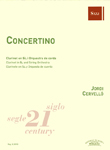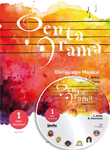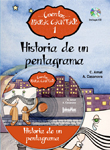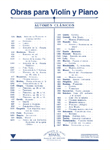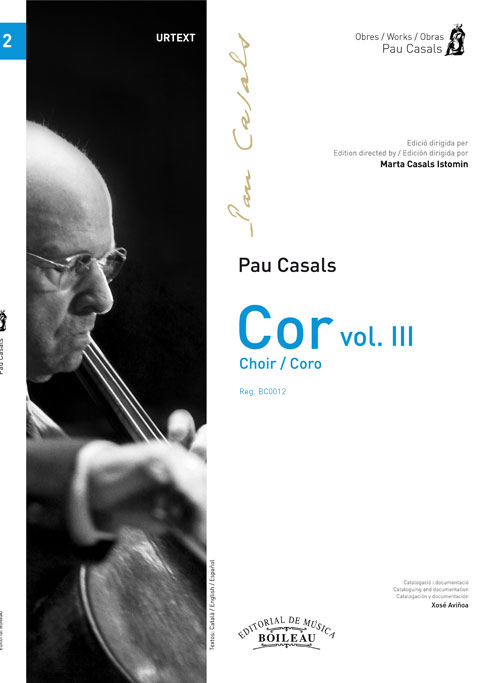WORKS
- Genre
-
Musical education
- Choir
- Counterpoint
- Dictation
- Direction
- Exam study manuals
- General music pedagogy
- Harmony
- Hearing
- Illustrations / Posters
- Improvisation / Sight reading
- Instrument methods
- Instrument pedagogy
- Instrumental study repertoire
- Instrumentation and orquestration
- Musical language
- Solfège
- Templates
- Theory and analysis
-
Incidental music
-
Lined paper
-
Flamenco
-
Religious music
-
Classical / contemporary
-
Modern music
-
Folk music / traditional
-
Musicology
-
Divulgation
-
Games and hobbies
-
Music therapy
-
Children / Youth
-
- Instruments
- Ensemble
- Difficulty level
- Period
- Genre
SOPORTE
Search
Find here: books, scores, composers, digital pieces, cd's
Best-selling works
Our classics
Newsletter
I wish to be informed of the news about your music
We have received your e-mail correctly
Multimedia
Cor, Vol. III
Missa de Glòria
Coro y Órgano o Armonio
CASALS, Pau; CASALS, PabloCASALS, Pau; CASALS, PabloCASALS, Pau; CASALS, PabloReg.: BC0012
25,30 €
P.V.P. (VAT included 4%)
Add to cart
- Review: CASALS ISTOMIN, Marta
- Ensemble: Choir: With accompaniment; Mixt.
- Genres: Classical / contemporary: Choir.
Religious music: Masses.
- Language: Latín
- Product format: Partitura
- Difficulty level: Intermediate
- Period: 1st half S. XX
- Publishing house: Editorial Boileau
- Collection: Pau Casals
- No. of pages: 96
- Measure: 32,00 x 23,00 cm
- Lenght: 25'00"
- ISBN: 978-84-17199-92-0
- ISMN: 979-0-3503-4316-2
- Available in digital: No
- Available for rent: No
Written at age 15 or 16, Missa de Glòria was the first work composed by Pau Casals. It is a work for mixed chorus (STTB) and harmonium (added to the 53 page manuscript dated 1892 in pencil «u órgano» [or organ]) and is based on a religious text. It was an ambitious project for a young person with hardly any musical training. With this work he wanted to present his own personal vision of the music that he often heard when his family attended religious ceremonies in El Vendrell at which his father played the organ. The fact that this work is scored for four voices and harmonium is probably due to the available voices of the parish. The harmonium is an ingenious invention created in 1842 by A. Débain. It easily substituted for the organ in religious ceremonies due its sound being similar to the organ in addition to the relative ease of transporting the instrument. Not only was it used as a liturgical instrument but also had begun to be used in concerts.
As previously mentioned, the holographic manuscript is dated 1892 and it presents the compositional writing of a neophyte with clear penmanship but still lacking a clearly formed calligraphy. The work is written in C Major with a 4/4 time signature using long note values and conventional harmonies. It uses an extensive variety of techniques although always within the religious style with homophonic episodes and simple counterpoint in an academic style which nevertheless gives indications of the personality of the future cellist and conductor.
1. Kyrie – C Major
2. Gloria, brief instrumental introduction – C Major
Domine Deus – F minor
Quoniam – F Major
3. Credo - D Major
Et in unum Dominum – E Major
Et ex Patre, instrumental introduction – A b Major
Qui propter, instrumental introduction– C minor
Et in Spiritum Sanctum, instrumental introduction – C# minor
4. Sanctus – F Major
5. Benedictus – C Major
6. Agnus Dei – C Major
1. Pau Casals, apunt biogràfic / Pau Casals, biographical notes / Pau Casals, apunte biográfico
2. Criteri de l’edició / Criteria for the publication / Criterio de la edición
3. Criteri de la documentació i catalogació / Documentation and cataloguing criteria / Criterio de la documentación y catalogación
4. Introducció a l’obra / Introduction to the work / Introducción a la obra
5. Partitures / Scores / Partituras:
Missa de Glòria
6. Catàleg / Catalog / Catálogo


